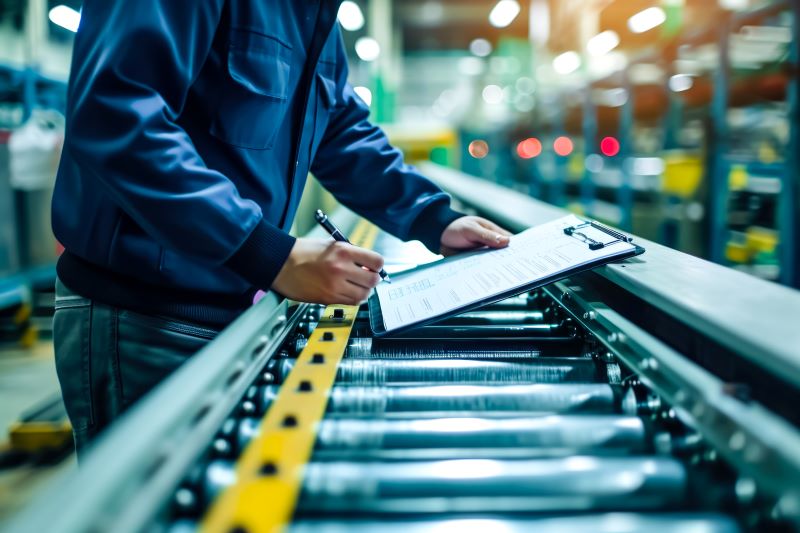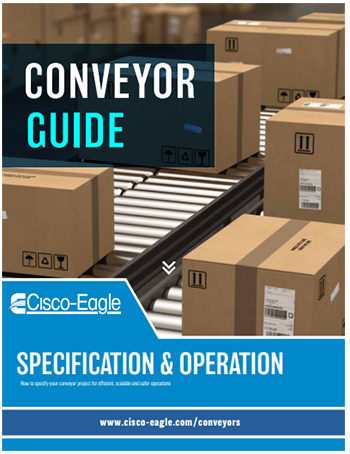Essential Conveyor Belt Maintenance Tips for Maximum Performance
Don't let your belts or belt drives stop your momentum

Conveyors are the beating heart of any industrial or distribution facility. Their daily operation is critical for moving product through your facility and to the key functional areas. They must flow seamlessly, each one performing its task to move forward.
Scheduled conveyor system maintenance keeps your system humming. Even so, having specific checkups on specific components is worthwhile. One area of emphasis is your system’s belts and belt drives. These are where the “rubber hits the road” in a conveyor system.
Belt drives

Belt drives provide dependable power transmission to keep The system flowing – but they require maintenance for optimal performance. The environment your system is in will affect the frequency of your belt drive maintenance. Depending on the loads, speed, critical nature of the equipment, and atmosphere, your intervals will be more or less.
Inspections help keep your drives humming. You should execute visual (and/or listening) inspections monthly, with thorough inspections around every 6 months. Inspect conveyors in difficult environments more frequently. Primarily in a drive inspection, you’re looking for unusual belt wear that could represent larger drive issues. Pay attention to distinct vibrations or visual damage.
Individual components warrant inspection; they consist of:
- Sheaves – When inspecting, check them for wear, nicks and sharp edges. You’ll also want to make sure the alignment and mounting are correct.
- Sprockets – Check them for wear and alignment as well. Visible wear on a sprocket is usually means for replacement, as it’s a critical component.
- Guards – Contamination or damage are the culprits here. Guard wear suggests possible interference with belts or sheaves, so don’t pass them up in your inspection.
Read more: Conveyors – Belt or roller?
Conveyor belts

As long as the product keeps moving and don’t fail, you probably don’t notice your conveyor belts.
However, when a belt fails, the entire production process can halt, leading to significant delays and increased costs. Maintaining conveyor belts in optimal condition is crucial for overall efficiency and productivity. The old adage of “an ounce of prevention” is definitely in play with belt maintenance.
What to watch out for
Blockage
Blockage occurs when transported items get stuck on the belt, preventing them from moving forward. This can happen for several reasons, such as the belt lacking sufficient grip or objects being improperly secured. When products are not securely fastened, they can shift, collide, or fall off the belt, creating a blockage.
To minimize the risk of blockage, selecting the right conveyor belt for your needs is essential. Investing in high-grip belts, especially for inclined or declined sections, ensures that items remain in place. Additionally, securing items properly and conducting regular maintenance to identify and remove potential obstacles can prevent blockages.
Mistracking
Mistracking is where the belt veers off its intended path. This can be caused by misaligned rollers, faulty installation, or worn-out tracking components. When a belt mistracks, it can lead to a range of problems, from production stoppages to uneven wear on the belt.
To prevent and address mistracking, it is crucial to ensure that all tracking components are correctly installed and aligned. Regular inspections can identify and correct misaligned rollers and worn-out components. Implementing a maintenance schedule to keep tracking components in good condition can significantly reduce mistracking problems.
Carryback
Carryback can be a common issue for systems transporting loose items like unpackaged food. This happens when residual material remains on the belt after discharge. These residues can create hygiene issues, equipment damage, and operational inefficiencies.
To mitigate the impact of carryback, it is essential to implement regular cleaning schedules to remove residual materials from the belt. Investing in self-cleaning conveyor belts designed to minimize carryback can also be beneficial. Choosing conveyor belts tailored to the specific materials being transported can reduce residue build-up and carryback issues.
Read more: Conveyor belt specification
Careful storage & handling
When you do need to replace, repair or re-connect your belts, don’t forget that proper handling goes a long way in their life. You want to store your belts in a cool, dry area, as keeping them in a hot environment will cause damage. When handling a belt, make sure not to crimp it sharply, as that will cause damage to the tensile members. Simply put, handle your belts with care, so they can handle your items while in motion!
Conveyors will run smoothly with care and a plan
While each of these factors can disrupt the belts in your conveyor system, addressing them without a solid plan is ineffective. Bringing your team together to create and adhere to a comprehensive maintenance plan is essential for identifying and mitigating potential issues.
Whether you involve just your maintenance team or include all departments that utilize the conveyor, establishing consistent inspection routines is crucial. Documenting what to review and being mindful of past instances as examples will enhance your team’s vigilance. This proactive approach will significantly help spot and fix future belt and belt drive issues.
Download Cisco-Eagle’s guide to conveyors & systems
Well-executed conveyors and systems will optimize your operation–and we can help you make that happen. Cisco-Eagle’s detailed guide to conveyors gives you advice from our expert employee-owners, links, articles and more.
Download the guide today
Evan Fleishacker




